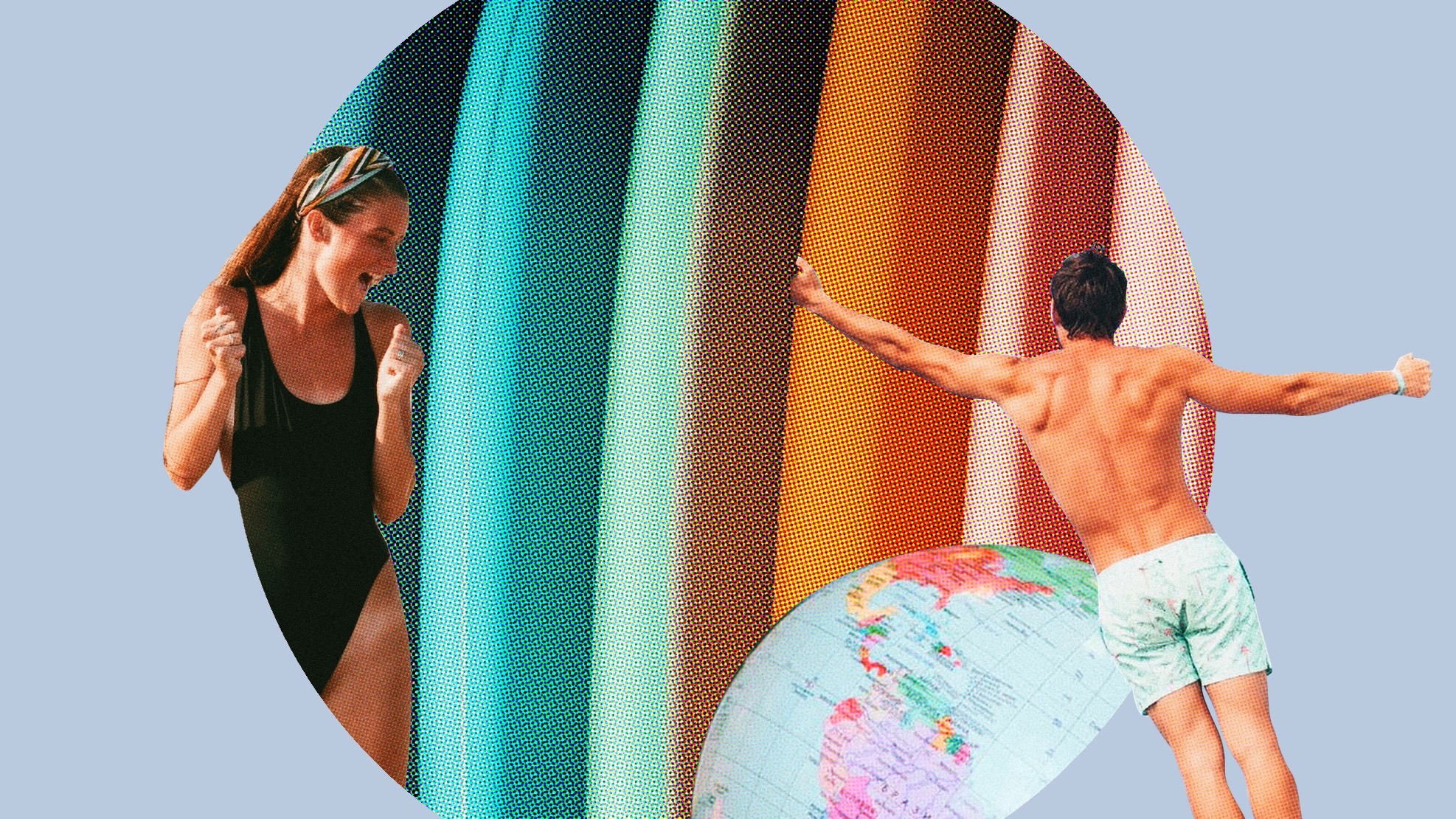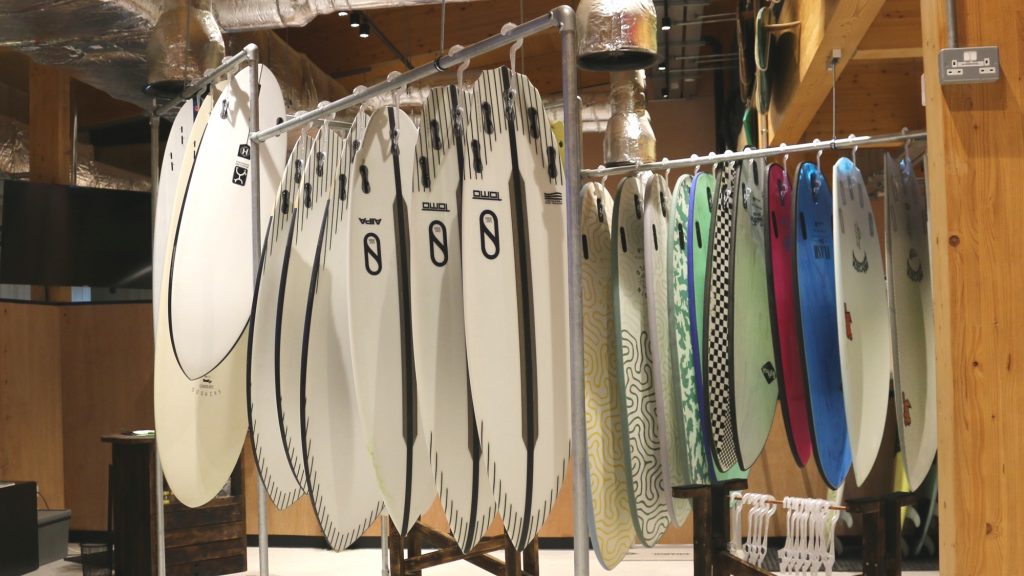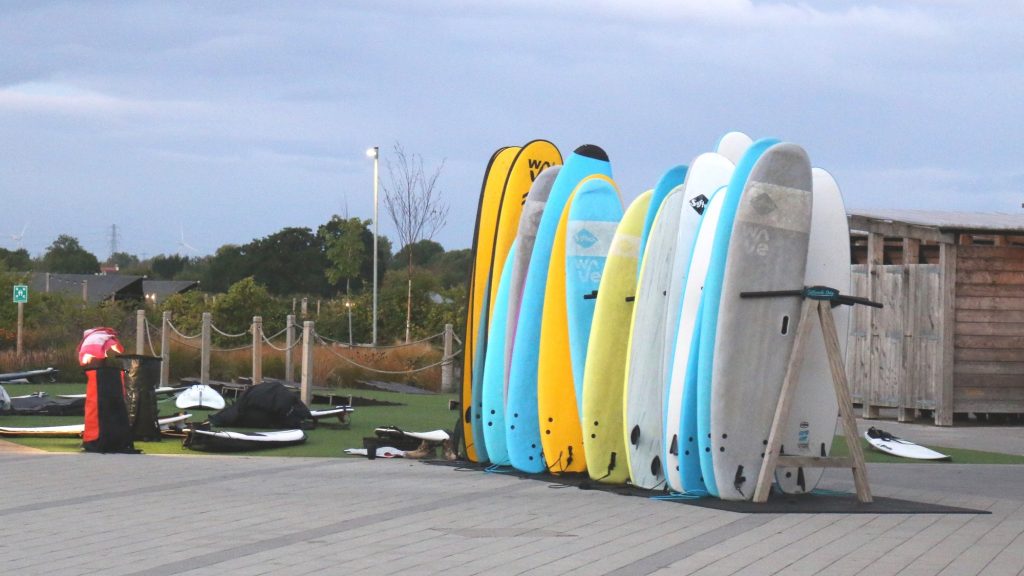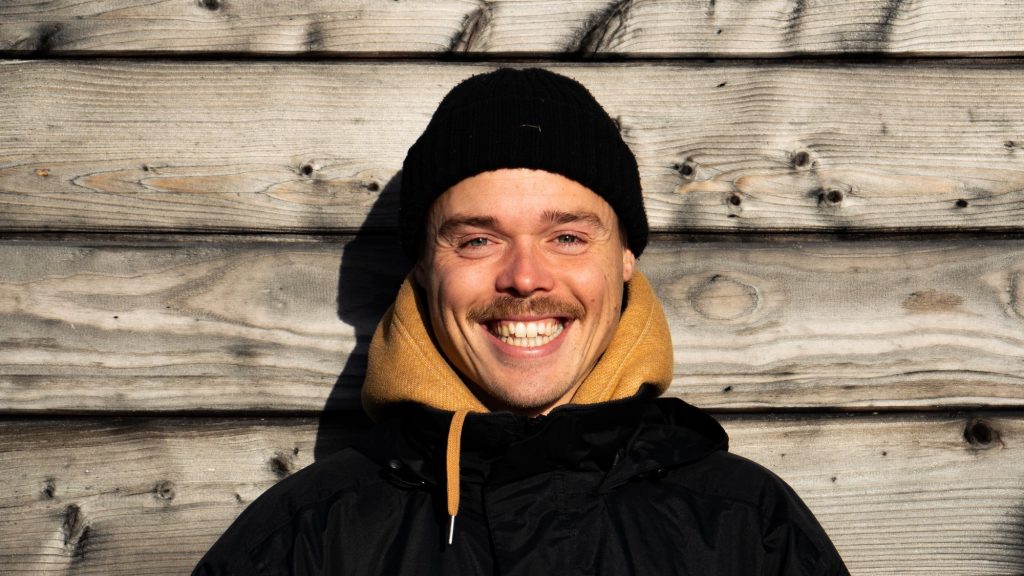Board Hire: How one surf park enhances the guest experience

Wave pools are hard on surfboards. And this goes across all wave-generating technologies, some more than others. If the technology doesn’t have concrete walls, there is still shallow concrete floor and lining. The wall in a Wavegarden Cove and at a Surf Loch set-up get the worst rap, but personally, we’ve crushed the nose of a rental in a PerfectSwell pool and also busted out a fin at Surf Lakes. It’s a wave pool thing everywhere.
But how surf parks deal with damaged hire boards in their rental fleet varies widely from facility to facility.
The way it works now, when you rent a board at most of the surf parks, rider and shred sled are given a thorough once over. The rental agent notes every ding, crack and shatter. When the customer returns the board, it’s the same process of examination. And for many, it’s fraught with the same anxiety reserved for rental car returns “maybe someone did ping the door in the shopping mall parking lot…?” It’s uncomfortable and contradicts much of the surf park hyperbole that places “guest experience” at the top of their offerings.
But the whole humiliating model has shifted at The Wave. They’ve recently launched a program that, in a nutshell, tacks on a slightly higher rental cost and eliminates the pre and post-surf judgment process.
We spoke with Harry MacBeth who manages The Boardroom at The Wave to find out how they are bettering the guest experience and shifting the board rental paradigm.

When did you join The Wave and what did you see?
I joined after the first lockdown in August 2020. So what the Wave did originally was they had boards free to hire. And when I started, it was a £10 rental because they just couldn’t keep up with how quickly the boards were getting damaged. And it’s changed because there had to be some sort of cost factored in to keep up with repairs which were constant.
So why has it changed from the £10 rental model to the current price structure of £25?
It gets expensive fixing the boards when you factor in labor and resin and glass. And it can also potentially put people off who weren’t surfing at a high-enough level to ride those sorts of boards in the pool. You want to make people think about whether the board is actually right for them. I think rather than people going “it’s free, I can take whatever,” it pushes them to ask “Is this the board for me? Is it going to work or am I more suited to a foamy board?” The rental fee starts that process of thought a little bit more.
What’s changed in the new boardroom and what are you doing differently?
Maybe at the start, we were limited in that we had only a couple of brands and models. So now it’s just about having enough choice for whoever walks through the door and them being happy that they’ve got something that works. We definitely looked at boards that are built to last a little bit longer. That’s why we went with Lib Tech and the Firewire AWT construction.
Despite all the Instagram clips we see, a good chunk of barrel sessions don’t end with claims or high-fives in the channel.
So it’s working?
Yeah, it’s very popular. We opened in August in the middle of the summer holidays and we were renting out 10 to 12 boards for some sessions. (Roughly one-third of the point section of the pool’s capacity.)
What are the hazards and in what ways do boards get damaged here?
Two big concrete walls down the side of the lake are the main ones and the concrete bottom. We see a lot of people bailing on take off, and that’s when most of the dings happen – rails mostly. The nose gets damaged if they hold on to their boards and go over the falls. That’s when the nose hits the concrete bottom. We see quite a few snapped noses. And also just riding too far in at the end of the session, and dragging the fins across the bottom – you see a few fin plugs go like that. But it’s the wall mostly.
Can you describe some of this for us?
I once saw a longboard that went straight down, then straight back up with some force and it flew a meter over the wall. And then it just karate-chopped down onto the wall. That was considerable. One time there was a foamy board just drifting across the lake with the surfer still attached but quite a bit away from it. The person behind them was on a hard board and ran over the foamy and the fin slice was about halfway through the board up to where the stringer would be. Sometimes people will hang on as they get washed in and the board just scrapes down the wall.
Sounds painful to see.
You just can’t watch it. It just makes you cringe and you have to turn away!

So you’ve switched from traditional PU foam and fiberglass construction to some of the alternative materials and makes.
Yes. So what we have now is the second installment of boards that we got, and they definitely take more of a hit. We’re still seeing some casualties, but not as many. If you hit any board enough times, it’s going to break. With the Firewire AWT, we’re seeing fewer snapped noses and more quick, easy fixes that we can turn around and get right back into the pool. The Lib Techs are very strong.
And how many boards are in your fleet now?
We’ve got 36 Firewire AWTs and about 20 Lib Techs. But we’ve only just opened the board repair bay this week, so we’ve got a backlog of repairs to get through before we get back up to a full complement. (Editor’s note, This interview was conducted in October 2022, The Boardroom at The Wave is fully stocked now.)
How does the pricing work?
We were thinking about the cost for hire and what we were going to charge customers for dings or if we should make it a cheaper rental cost. So we just decided on the flat price with a small damage fee included in the price. Now each board has that little bit extra cost which is better, you know, rather than having that conversation with the customer after they’ve dinged it and saying “you owe us another 60 quid.” It saves an awkward conversation for sure. We’ve had lots of those conversations.
Do some people think it’s too much?
Yes. You get some people who think the 25 quid is extortionate and that it’s not affordable, but it’s not. We see that as a demo range, not as a model to rent this board every time you come. It’s more so that we can keep stock and that I know I’ve got a Seaside or whatever the guest is looking for. It works for someone who wants to try a Seaside rather than buying it first and figuring out very quickly that it wasn’t the right board for them. It’s a lot cheaper to try it through a £25 rental than £750 new and then having to sell it for £550

There must be challenges when hiring out a board, is the average customer pretty savvy when they pick out a rental?
It’s great to talk surfing and gear with a bunch of different people. And the challenges are that you don’t always get an idea of a person’s ability from a five-to-10-minute conversation. It’s hard to gauge the level of that surfer, and whether that board is going to fit them. Because the main thing for us is that they have the best time and enjoy the session and not struggle. But secondary to that is that we want to make sure that they’re not hitting the wall on the first wave.
How do you gauge someone’s level? And in that conversation, what are some key signals?
Yeah, you look for signals and red flags. But just having a general conversation with them, like have they surfed before? “When was the last time you surfed?” If it’s only been a couple of weeks, then okay, cool. “Oh, It’s been two years?” So you’re just trying gauge it that way, whether you want to push them toward the soft foamy board and maximize the amount of waves they’re going to get or whether they’re going to be absolutely fine on whatever they choose.
What’s the biggest stressor of your job?
If we don’t have the boards because we can’t repair them fast enough, or because the board’s been taken the day before or what have you, that’s the most annoying thing. I think, when you’ve got an experienced surfer come in and all you can offer them is a 7’2″ egg and they want a high-performance shortboard, it’s frustrating. Hopefully, with the repair shop now open, that won’t happen too frequently anymore.
Related Coverage
